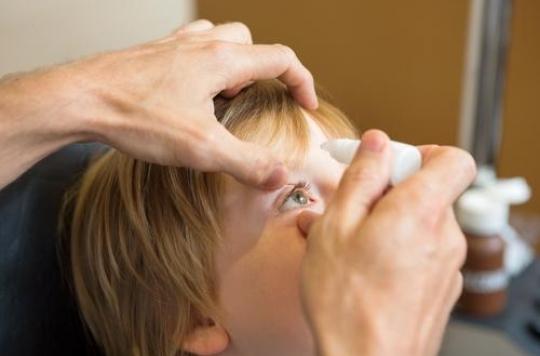Mydriatic eye drops have lethal risks for children and must be used according to the indications.

They are among the products closely monitored by the National Medicines Safety Agency (ANSM). Mydriatic eye drops, used to dilate the pupil, are not without risk, and especially on the youngest, for whom they are not always indicated. The ANSM thus issues a information point to warn about the undesirable effects of this medication, and to remind us of the recommendations for use.
Two types of eye drops are used in ophthalmology to obtain pupillary dilation or cycloplegia: anticholinergic and antimuscarinic agents, represented by atropine eye drops and derivatives (atropine, cyclopentolate, tropicamide and homatropine), and alpha-mimetics, represented by phenylephrine .
Absorption by the body
However, the side effects can be serious, even fatal, for the little ones. “Children are more at risk than adults of developing general adverse effects (…), due to a potential systemic passage”, writes the ANSM. The systemic passage corresponds to the absorption by the whole organism of a substance.
In the event of a systemic passage, these active ingredients have effects in particular on the digestive, cardiac and central nervous system levels. “Serious cases of side effects, sometimes fatal, have been reported in children who have received mydriatic eye drops; the occurrence of these serious undesirable effects is often described in the context of a combination of mydriatic eye drops, ”specifies the ANSM.
Caution
To limit the risk of undesirable effects, the agency recommends the greatest caution when administering to a premature or newborn baby (risk of abdominal distension, ileus, occlusion, and hemodynamic risks).
For all children, it is necessary “not to exceed the maximum recommended dosages in a given time interval”. The agency also recommends “to press on the inner corner of the eye for a minute to occlude the tear points”, but also “to wipe the part of the administered eye drops on the child’s cheek that is there. drains, in order to avoid any risk of ingestion, to limit the systemic effects, and, in premature babies, to prevent the risk of passage through the skin ”.
Finally, the ANSM insists on the indications for these eye drops, which appear to be used outside Marketing Authorization (too high doses, age group not respected, etc.), which do not guarantee the safety of the drug. “Phenylephrine eye drops 10% is contraindicated in children under 12 years of age; atropine eye drops 1% is reserved for adults and adolescents over 12 years ”.
Only the drugs listed below in the specified indication should be administered to patients.

.

















